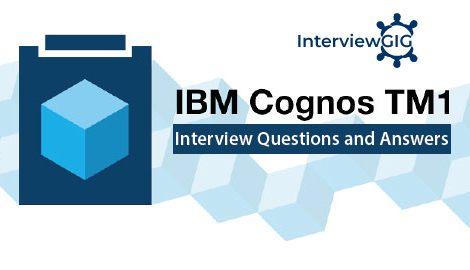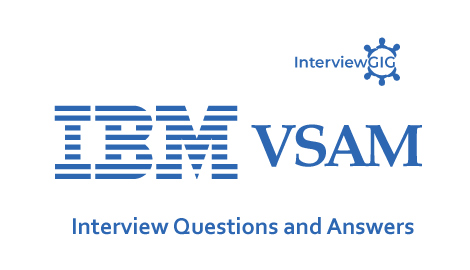Explain ICM instruction?
ICM means INsert character under mask. its a movement of character under mask bits.
eg
ICM R8,B’0110′,SRC
Before execution:
R8 ==> 12 34 56 78
SRC ==> AB CD EF 10
After Execution:
R8 ==> 12 CD EF 78
Can we use an equated value as operand for an MVC instruction? reason for the same?
If you write an MVC statement with an equated value as the sending operand, then the assembler will try to resolve that operand value as a base and displacement, it will not necessarily throw an error at assembly, but the results at execution will be unpredictable and may well give rise to a protection exception.
The point of the MVI statement is that the single byte sending operand value is assembled as part of the instruction itself and does not have to be ‘fetched’ at execution time, therefore if you are only moving a single byte of fixed value, then an MVI will be marginally more efficient than an MVC
How to retrieve the instream data in SYSIN?
Use Accept in procedure division.
Example:
WORKING-STORAGE SECTION.
01 empno. Pic x(05).
01 empname pic x(15).
01 empsal pic 9(10).
PROCEDURE DIVISION.
…………….
PERFORM ACCEPT-PARA.
…………..
ACCEPT-PARA.
ACCEPT EMPNO.
ACCEPT EMPNAME.
ACCEPT EMPSAL.
In JCL:
………..
…………
//sysin dd *
001
aaaa
330000
/*
How to pass the parameters from JCL to assembler PGM?
R1 contains a fullword that contains a address pointing to the parm data. In pgm before accessing the parm data use L Rn,0(,R1) where n=3,..11 , Rn contains the address that points to parm data. Create DSECT that contains a halfword and the length of the data.
What will happen if we drop the base register in the PGM which contains only one base reg?
It will give an error at the time of assembly, if there are some labels defined in the program (provided they are being referenced in your program). This is because the assembler resolves the displacement of that variable from the location where your base register is pointing to.
Why do we have multiple base registers in certain programs?
it all depends upon the length of your program, if it is more than 4095 then we need 2 registers else only one can do needful. basically, we can even use savearea register as a base register, so as to accomodate the length of the program
What is the difference in data type x and p?
In MVS assembler data type X denotes hexadecimal data type which unsigned pack. suppose you define VAR1 as “VAR1 DC X’01′”.
It will occupy 1 byte in the memory and stored as:
0 in the zoned nibble and 1 in the numeric nibble.
P denotes the packed data type, similar to COMP-3 in COBOL.
if you declare any variable with this data type then it must have a sign byte at last nibble.
See following example:
VAR2 DC P’1′
it will occupy one byte in the memory and stored as ‘1C’.
Why do we use drop? what does using do?
Neither DROP nor USING affect the register contents. Once a register has been loaded with the address of a piece of storage, the using statement can be used to ‘map’ that storage against a set of labels defining the layout of that storage e.g. a DSECT. Then whenever one of those labels is referenced in the code, in moves etc, the assembler resolves the relative address as a particular displacement from the absolute address in the register. The DROP instruction removes the relationship between the labels and the register and renders subsequent references to those labels as unresolvable, giving rise to errors at assembly (compile)time.
Typically, the DROP instruction will be used to allow use of the register for another purpose, e.g. address a different bit of storage via a using staement on second DSECT without the risk of corrupting that data via moves referencing the original DSECT.
How to initialize a register to 0000?
XR Rx,Rx:
- This is the best way and most efficient way of initializing
- the register values or Label values to ‘0’.
- Its because the time required to execute a Logical
- Instruction is always less than the Arithmetic Instructions.
- g SR Rx,Rx consumes more execution time than XR Rx,Rx.
- So XR Rx,Rx is a better way to do obtain our target.
What is base register?
A base register is any general-purpose register chosen by programmer. It is assigned at the beginning of the program as part of housekeeping with the USING assembler keyword, and its purpose is to maintain address ibility within a page (4k) of code or data.
Why can only 256 bytes be moved from one address to another in a MVC?
Lenght feild is 8 bits so the data is stored in binary format so if we have all 8 bits set to 1 then the length will be 128+64+32+16+8+4+2+1 = 255.or 2^7+ 2^6+2^5…2^0 = 255.
so the lenght is 256.
How are data passed from JCL PARM to assembler program? and how is data passed from a calling program to an assembler called program?
By convention, general purpose register 1 will have the address of the parameter list. The list will be a list of pointers (addresses) to individual parameters. The CALL macro does this, but you can bypass the CALL macro and be creative on how you set up the parameter list. Don’t forget the parameter must be on a fullword boundary.
What is the use of Trt instruction and how it is working?
For example, we want to test if given variable is numeric we can do it by following code.
We can define a table with all FF execpt from 0 to 9 00
Table1 DC 256c’ff’
org table1
dc 10c’00’
Now we can give TRT var1, table1
BZ numeric
What is need of start 0?
START is an assembler directive which has an optional operand, (0 in your example). This operand acts as the starting address of the program e.g. PROGNAME START X’3E0′ tells the linkage editor that this program is to be loaded into main storage at address ‘3E0’ in hex.
How to pass instream data in sysin with assembler?
You will need to open de file SYSIN via a DCB and read the data via GET commands. The data in the PARM field is passed via register 1. Any dataset you want to use in Assembler you will need to open. There are no automatic allocation.
Can we use MVC instruction to move pack field to pack field. which instruction you will use and why?
We can certainly use the MVC instruction to move the pack data to another pack field.
How to initialize 20,000 bytes in the assembler?
since the machine-code for MVC moves up to 256 bytes, you would need to do a series of MVCs to initialize 20000 bytes. this requires that you maintain a register or two to keep track of how far you’ve progressed through initialization.
possibly, you could get MVCL to do it; i’ve never tried…
MVCL uses 2 sets of even-odd pairs of registers to do the move.
you specify source address, destination address, length of source, length of destination, and fill character in the registers. the fill-character goes into the high order byte of (I THINK…) the destination length register (in this case r4)
l r4,=f’20000′
l r6,=f’20000′
la r7,source_field
la r5,dest_field
mvcl r4,r6
How to produce soc7 abend?
S0C7 occurs when the data exception occurs.They are many ways to produce S0C7
- Move non-numeric data to a numeric feild
- Compare junk data with a numeric feild
- Use a non-numeric data in COMPUTE statement
- Refer to the occurence in a table beyond the occurs time with SSRANGE not checked in complier options
How to access VSAM file?
VSAM file can be accessed through an Assembler application program by using assembler macros RPL, ACB





